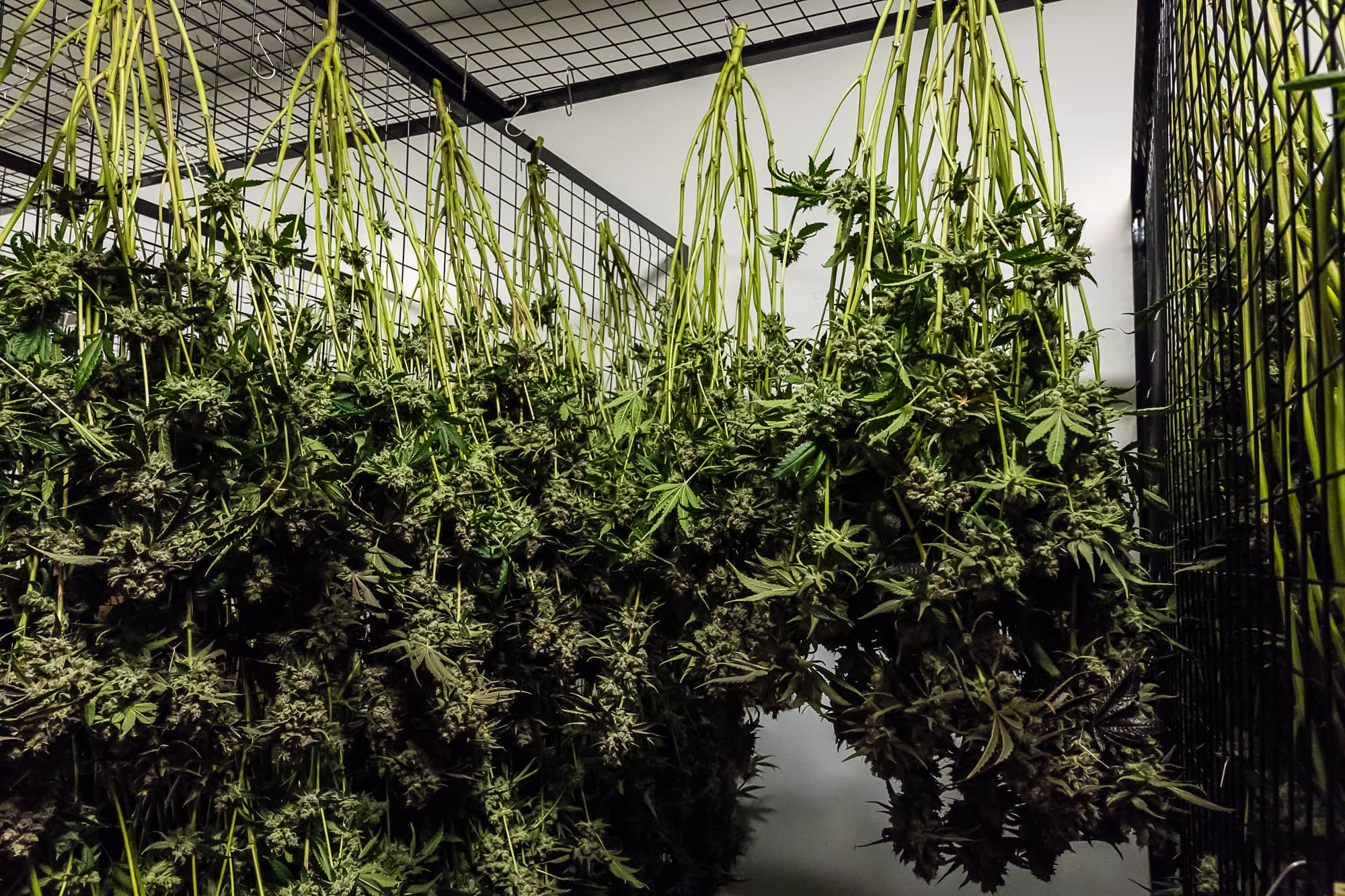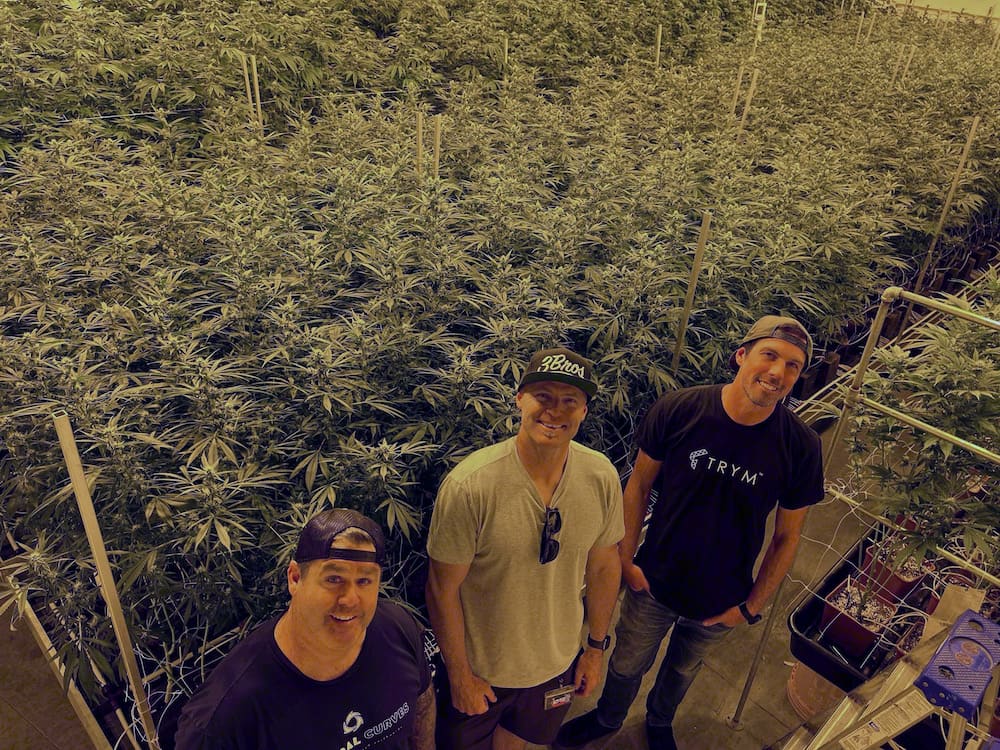In order to be successful in the cannabis industry, cultivation brands and businesses need to have a well-developed cannabis marketing plan. A marketing strategy can include any number of initiatives and channels. Here, we’ll present the top five essential components for a cannabis cultivator: branding, website, search engine optimization (SEO), public relations, and influencer marketing.
Each of these components is important for achieving success in the competitive cannabis industry. Branding helps create a memorable identity for your company and products, while a strong website and online presence helps you reach more cannabis consumers and wholesalers. SEO ensures that your products and services are seen by the right people online, while influencer marketing can help you connect and engage with a wider community. By focusing on these five components, cannabis growers and operators can craft a winning marketing strategy.
After we dig into each topic, we’ll also cover how to measure results, whether to outsource or hire in-house, stay compliant with advertising regulations, and finally, provide you with a marketing plan template to develop your own plan.
Importance of Cannabis Marketing Strategies
Cannabis marketing is often overlooked by cultivators, but its importance cannot be understated. Cannabis legalization continues to spread to more states across the US and globally. At this time, brand value has never been more important for cannabis brands. A well-developed marketing plan can help a cultivation brand stand out from its competitors. Growers who market themselves correctly will be able to generate more business than those who don’t.
Branding
Some cannabis cultivators solely grow under wholesale contract while others worry about packaging and distribution to cannabis retailers. In either case, branding plays a crucial role in the way the business is perceived by businesses and consumers in the marketplace.
In a sea of competing farm, flower, and concentrates brands, one thing is for sure – you have to stand out from the crowd. It’s never too late to refresh and redevelop your brand. In fact, many companies regularly revisit their brand visuals and brand experience. Whether it’s to stay current with changing trends or simply to match the evolution of the business, a brand must stay current and relevant.
Unique Selling Proposition
What makes your farm stand out from the rest? From differentiation, lasting brands are born. Brainstorm with your co–founders or team members on the unique attributes of your business, company culture, farming or extraction practices, and define your reason for being.
It can be as simple, yet profound, as your personal story of how you came to start the cannabis company. A brand based on story is much stronger than one based on product attributes. Brands who emphasize the ‘why’ will resonate more with consumers and make lasting impressions. While a brand has many components, everything must come together in a consistent way for people to remember and recognize your company instantly.
The Brand Experience
A brand is not just a logo or a website, nor is it the label on your jar. A brand is what your customers and partners think of when they think of your company. It’s also the way your team thinks about the company they work for. Your brand supports your reputation when working with partners, influencers, vendors, contractors and most importantly, customers.
The brand story, supported by visual, physical, and verbal storytelling can help create meaningful connections with your partners. Loyalty and advocacy for your brand can only form over time.
In order to define your brand personality, begin to think about it as if it were a real person:
- If your brand was a person, what would be their favorite hobby?
- If your brand were to walk into a party, what would they be wearing?
- If your brand were a celebrity, who would they be?
This is a fun exercise to engage in with both stakeholders and others who know your company well. Consider all of the situations in which your brand represents your company. The brand experience, how it appears, sounds and interacts, must be consistent across different mediums. Develop these details and the brand experience will be impactful and effortless.
“Design is not just what it looks like + feels like. Design is how it works.”
Steve Jobs
Website
More than ever, website visitors expect a level of design and functionality from your website. Great cannabis website design begins with your user in mind. Who are they and why are they coming to your site? What are they hoping to get out of spending their time there? Some users might be looking for information on the latest strains or products available. Others might be looking for a way to inquire about partnerships. Site design and functionality must be developed with the end user in mind.
A website is a wonderful brand asset, because it’s yours. Neither Instagram nor Facebook can shut it down, as they do with so many cannabis brands’ profiles. In a web search, it’s preferable to have your brand name and website link appear at the top of the first page. Otherwise, people looking for you will have a hard time finding your cannabis business online. And be sure to list your website in the various cannabis directories.
Search Engine Optimization (SEO)
Cannabis businesses who understand the importance of digital marketing and promoting their website are quickly learning the importance of search engine optimization (SEO). Without an SEO strategy, a website can be buried on page two, three or even worse, so low in Google search results that those looking for you won’tt be able to find your site.
Follow these 5 tips and jumpstart your SEO strategy:
1. Research your keywords
When it comes to SEO for cannabis businesses, the first step is to research your keywords. What words or phrases do you expect people to use when they’re looking for information about your products or services? Perform a search on your list of keywords with a tool like SearchVolume.io. Once you know the best keywords to target, start incorporating them into your website content and backend page or post settings.
2. Use keywords in your title tags
Your title tag is one of the most important pieces of SEO-friendly text on your website. It’s the text that appears in the search engine results pages (SERPs) as the title of your website. Make sure to include your top target keywords in this tag, as well as in the meta description tag.
According to John Reinesch, Digital Marketing Consultant at Exponential Growth, “Using your main keyword in your title tag is one of the few things that still has a big impact on your SEO results. The next level to this tactic is not only including your main target keyword but writing the title tag in a way that is compelling and encourages a high click through rate. All of the ad headline writing best practices apply to your title tag. Across our clients we have seen large increases in organic traffic by focusing on improving the organic CTR of our clients top pages.”
3. Optimize your website content for those keywords
Once you know what keywords you want to target, it’s important to optimize your website content for those keywords. That means including them in your website copy, as well as in the titles and meta descriptions of your web pages.
You can also use keyword-rich images on your website, and make sure to include your target keywords in the file names, alt text and description fields.
4. Build quality backlinks to your website
One of the best ways to improve your SEO is to build high-quality backlinks to your website. Backlinks are hyperlinks from other websites that point to a page on your website. They’re important because they help Google and other search engines understand the importance of your website and how to rank your site in search results.
There are a number of ways to build quality backlinks to your website, including:
- Creating valuable content that others will naturally want to link to
- Guest blogging on high-quality, relevant websites
- Participating in online forums and discussion boards, like www.growersnetwork.org
- Submitting your website to online directories
5. Use social media to promote your website and content
Social media can be a powerful tool in marijuana marketing for promoting your website and content. Not only can it help you reach a larger audience, but it can also help you build links and improve your overall SEO.
Make sure to include links to your website on your social media profiles, and use social media to share your content with your followers. You can also use social media to build relationships with other cannabis businesses and industry experts.
6. Monitor your website’s search engine rankings
One of the best ways to measure the success of your SEO efforts is to monitor your website’s search engine rankings. You can use a variety of tools to track your rankings, including Google Search Console and Moz’s Open Site Explorer.
If you notice that your website’s rankings have declined, it may be a sign that you need to adjust your SEO strategy. SEO may be beyond what your internal team can take on. Consider bringing on a consultant to manage and support your long-term efforts.
Public Relations
Heidi Groshelle, Founder of Groshelle Communications, provides the following guidance on Public Relations in the marijuana industry.
Public Relations has proven to be the most powerful way to navigate around the rigorous digital-advertising restrictions placed on the cannabis industry. Everyday, the media and investors watch for press releases that introduce cannabis companies, announce new products, release new data, move markets, and much more.
Officially: Public Relations is a strategic process that helps build credibility.
Practically: PR provides information and newsworthy stories to a journalist so they can write an unbiased article about your product or cannabis business, if they chose to.
Honestly: PR in the marijuana industry includes pay-to-play and earned media, content marketing, social media campaigns, and so much more.
However, getting exposure for cannabis-related stories and companies is really hard. Traditional, mainstream media outlets and prominent news websites often refuse to cover cannabis stories. Every cultivation brand thinking about initiating a public relations campaign has to have a compelling news story.
The media are interested in:
- Funding or a liquidation event
- A BIG partnership
- Fascinating new research and data
- Groundbreaking innovations
- Controversial Points of View
- New cannabis products to test and review
To pitch your news or content to journalists and bloggers, identify specific writers who write about your niche and who might be interested in helping you.
DO
- Keep your emails professional and short.
- Respond quickly and succinctly to a reporter’s questions.
- Provide photography and video only if requested.
DON’T
- Stalk a reporter on social media.
- Demand a reporter write about you.
- Lie or present false facts. EVER
These simple habits will help you and your company put forward a professional, big company presence whenever you have news to share.
“Every cultivation brand thinking about initiating a public relations campaign has to have a compelling news story. To pitch your news or content to journalists and bloggers, identify specific writers who write about your niche and who might be interested in helping you.”
Heidi Haller Groshelle, Founder, Groshelle Communications
How Social Media Marketing Can Benefit Cannabis Cultivators
Social media marketing is a great way to engage with your audience and build brand awareness. It’s also a great way to connect with potential customers and drive traffic to your website.
When done correctly, social media marketing can be an extremely effective way to reach new customers and grow your cannabis business. Here are some tips for getting started:
1. Choose the right social media platforms
Not all social media platforms are created equal. You should choose the platforms that best align with your target audience and the type of content you want to share. For some growers, Instagram is everything. But for other operations, Linkedin might be the optimal platform to invest time and energy.
2. Create high-quality content
If you want to keep your followers engaged, you need to consistently share high-quality content that’s relevant to them. This means sharing posts that are interesting, informative, and entertaining. If photos and videos are most important, invest in a lightbox or a professional photographer. If it’s written content, bring on a good writer or outsource newsletter and blog management.
3. Engage the community
Finding your niche in the industry is important for establishing a social presence. Social media is about communicating, connecting, and sharing. So be sure to engage with people in the community, both your followers and not. Meaningful, authentic engagement is paramount to growing your social media presence. Reply to comments, answer questions, and join in on the conversations.
4. Use hashtags
Hashtags are a great way to reach a wider audience and connect with people who are interested in your products or services. One way to identify the hashtags you should be using, is to explore similar accounts and list the tags they use. Look at each hashtag’s search volume. Tags that are millions of posts are too large to be discovered in. So identify a mix of small tags in the thousands of posts all the way up to larger tags in hundreds of thousands. Diversity is key.
Recently, Instagram made the recommendation to use 3-5 hashtags per post, even though up to 30 are allowed. Along with several tags you identified as relevant to your niche, sprinkle in one or two more that are particularly relevant to the post’s content. And beware of shadow-banned hashtags. If you want to manually check if a hashtag is banned, you can visit the hashtag page in your Instagram app, and you’ll see that only a few top posts are shown.
5. Promote your content
Don’t forget to promote your brand content on social media. Share your blog posts, promote your products and behind the scenes footage of your company.
Keeping an active and dynamic social media account also helps you engage with the dispensaries that sell your goods. When you can make it easy for them to repost your product shots, for instance, more cannabis consumers will get exposure to your brand. A cannabis dispensary has a lot of power in putting your brand in front of consumers, so put your best foot forward and stay engaged with them on social media.
Influencer Marketing
Influencer marketing is a form of marketing where the focus is on building relationships with key people who have a large network and community. Connecting with influencers in your niche or in the greater industry can help promote your brand to their followers, resulting in more sales and brand awareness.
There are several types of influencers you can work with, including bloggers, social media accounts, and even celebrities. It’s important to choose the right type of influencer for your brand, and to make sure their values align with your own.
There are different types of influencer relationships, both paid and free. Find a naturally complementing way to engage with an influencer. Whether it’s providing them a graphic or photograph to post, co-branding a cannabis product, apparel or something more complex, building the relationships is the foundation.
How Commercial Cultivators Can Measure Marketing Results
Depending on the marketing activities your company runs, the methods by which you’ll track results will be different.
By tracking your marketing campaigns, you can determine which tactics are working best and focus more of your energy on those strategies. This will help you save money and time while still achieving the desired results.
Cannabis Marketing KPIs
KPI stands for key performance indicator, a measure of performance for a specific objective. A top-level KPI that a marijuana cultivation business might track is the profit margin or labor hours per harvest.
Every marketing campaign also has KPIs and metrics that can help you determine if it’s successful. Some common KPIs used in evaluating marketing strategies are:
- Views: The number of times your video was watched (impressions x views = total audience size)
- Likes, comments, and shares: Social media engagement is a good indicator of how well your content was received.
- Clicks: How many people clicked on a link in your email?
- Leads: This metric tells you how many people signed up for your email list, downloaded your white paper, or filled out a contact form on your website
- ROI: Return on investment in marketing or the revenues you were able to achieve from your marketing campaigns
Tracking and Analytics
Google Analytics is a must when it comes to tracking website KPIs. Number of visitors, their attributes like region, age and their actions on your site. With Google Analytics, conversion tracking is made possible by identifying what forms and submissions are most important to track. These forms are configured as goals and you can track any number of important online conversions.
Every cannabis marketing campaign should have key performance indicators (KPIs) and metrics to help you determine if it’s successful. Some of the most important KPIs and metrics include website visits, conversion rates, lead generation, and social media engagement.
When establishing key performance indicators for your cannabis marketing campaign, it’s important to consider what’s most important to you. Are you looking to increase website visits? Increase conversion rates? Generate leads? Increase social media engagement? Once you know what you’re aiming for, you can set measurable goals and track your progress.
One key performance indicator (KPI) for increasing website visits could be the number of contact us form submissions on your website. Decide what is most important in a marketing campaign and begin tracking the KPIs that show the success of your efforts.
Pros and cons of hiring a marketing agency or building an in-house team
There are pros and cons to hiring a cannabis marketing agency or building an internal marketing team. Hiring an agency can be a great option if you don’t have the time or resources to handle your own marketing. However, it’s important to make sure that the agency has experience in the marijuana industry and knows what they’re doing and the challenges that come with the job.
If you choose to build a marketing team in the company by hiring employees, you’ll have two sets of skills to choose from: marketing professionals or cannabis industry mavens. It’s rare to find people that deeply understand both fields, but they’re out there!

A Marketing Expert Weighs In
Integrated marketing expert, Karen Freese, Founder of Freese Consulting, spoke with us on this topic. Whether you choose to hire in-house or outsource, this strategic decision requires some deliberation. Here’s what she had to say about each choice.
On hiring in-house:
“Forming a marketing department in-house requires forward thinking by the Founder or Executive Team prior to hiring. Where does the company see themselves in 3 years and how is the marketers’ role beyond executing the immediate tactical needs, going to evolve to get them there.
For instance, bringing in a social media specialist with a couple years of experience will have a completely different contribution level than a generalist with 7+ years in brand, retail, distro, digital, and marketing strategy with P&L chops. Hiring the broadest skill set in a small business is the wiser decision to lead future junior talent or an agency partner in the long-term.”

On outsourcing to a cannabis marketing agency:
“Hiring a marketing agency is like forming a strategic partnership. Before engaging, develop an RFP outlining the business needs, available budget, and expectations of the agency. Always vet their references and relevant body of work or risk the downside, spent money with inconclusive results due to unclear strategic direction and mismatch of needs.
The benefit of hiring an agency is the breadth of talent resources working on your business, as a team. Expect to pay for this collaborative expertise. Agency talent fees are 4+ times more expensive than the salary of one person in house. Using a consultant or agency to provide services is well worth the investment.”
Marketing Plan Template
A marketing plan is one of the most important tools for any business. Whether you’re just starting your business, looking for funding or investors, or bringing on new partners, they’ll all want to see a marketing plan.
A good marketing plan includes everything from identifying your target customers to how you will reach them to how you will create repeat buyers. Your marketing plan is the roadmap you will use to get customer loyalty and increase the growth and success of your company.
Tips for Developing a Cannabis Marketing Plan
- Be creative and think outside the box when it comes to marketing your business. If everyone is doing the same thing, you’ll get lost in the crowd.
- Focus on your customer. Marketing is all about raising awareness and driving demand from your target audience. Marketing strategies will revolve around this customer’s life, tastes and preferences.
- Design the ways in which you’ll track everything you do so you can measure ROI, find out what’s working best for your company, and keep improving over time.
- Thorough development of strategies and tactics creates a stronger document that can be shared to team members and stakeholders. A solid marketing plan will allow you to hit the ground running from day one.
Free Cannabis Marketing Template
In true Trym fashion, we’ve created a sample marketing plan document, outlining the main sections and headers you should include in your marketing plan. There are short explanations for each section, but you’ll need to research on your own or work with a marketing professional to build out your strategies and record them into the document.
Stay Compliant with Cannabis marketing laws and regulations
Marijuana marketing will not be like marketing in other industries until federal legalization takes place. Until then, tech companies are complying with federal laws, which makes it hard for cannabis companies to advertise.
Cannabis advertising is banned on Facebook, Instagram, Twitter, and Google. Many restrictions also apply to CBD products and ancillary firms that do not actually sell or handle the plant but merely reside within the legal marijuana industry.
Businesses must be inventive and tenacious in looking for new ways to get their goods in front of cannabis consumers. Finding organic and sponsored pathways to get in front of your target demographic within state and federal laws is possible, but it can be tough.
State laws differ from one market to the next. Some are more stringent than others. For example, cannabis advertising is illegal in Maryland, including images and text on television screens, as well as on websites, social media platforms, apps, or mobile devices.
If you’re unsure whether the marketing or advertising strategy you’re pursuing is legal and above-board in your state, be sure to consult with a lawyer who is well versed in cannabis advertising laws.



















